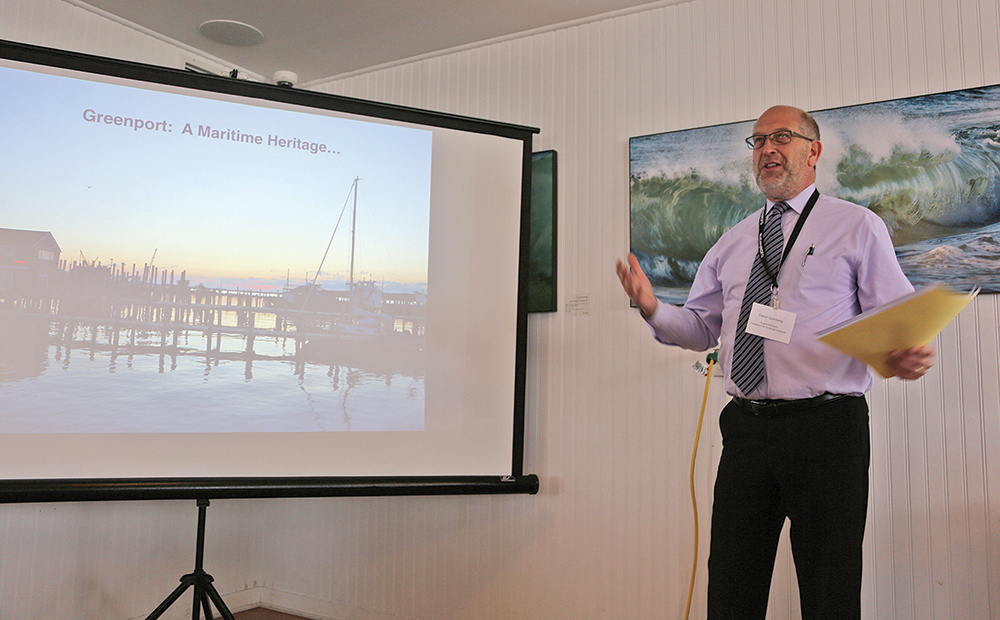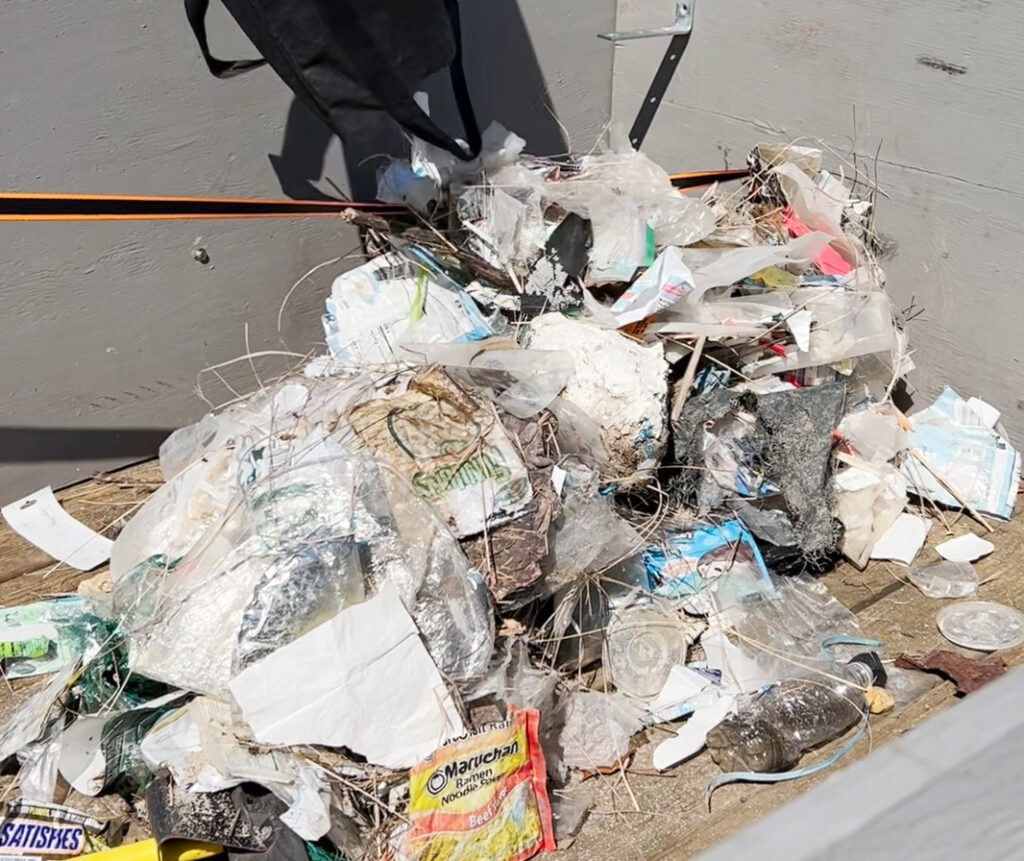Greenport schools, marine businesses talk pros, cons of Porter Marine Program

Representatives of 15 local maritime businesses joined Greenport High School officials Monday at a forum to discuss a marine program that’s being considered for the high school curriculum.
The Porter Marine Program, part of the $23.8 million bond project district residents will vote on later this month, is an engineering- and technology-focused initiative that would give students the opportunity to study various marine industry trades, Superintendent David Gamberg said.
“These students could learn a work ethic, they could see directly what hard work yields,” he told the group following a presentation. “That’s a very important commodity that you can’t learn in a textbook.”
The hands-on program would offer credit-bearing instruction in engine maintenance, boat building, marine manufacturing, dock building, boat supply and shipyard management through apprenticeships and classes taught by roughly 50 local marine businesses, a district statement said.
The professional panelists — Captain Ernie Fink of SUNY/Maritime College, Yvonne Lieblein of Port of Egypt, Steve Lubitz of Wooden Boatworks, Walter Gezari of STIDD Systems Inc. and high school principal Gary Kalish — tackled the benefits and drawbacks of the potential program.
Ms. Lieblein said the program would expose students to the marine lifestyle. “This could have a light turn on for them that they might have not known existed,” she said.
Capt. Fink said he’s witnessed a rapid expansion of technology, like wind farms and navigation equipment, in the boating industry. He predicted that these expansions will produce more jobs for future generations.
Steve Romeo, co-owner of Romeo Dimon Marine Services, said that although he knows students will be interested in the program, he’s concerned that graduates will not find be able to find a permanent residence that will enable them to remain with the local businesses.
“Our biggest problem is they’re not there for us to hire,” Mr. Romeo said. “We don’t have affordable housing and when we get affordable housing they tend to go toward the people who don’t need it.”
Mr. Gamberg agreed that the lack of affordable housing could compromise local businesses’ ability to retain longtime employees, but said there’s a need for a marine program on the East End.
“I’m not trying to downplay the reality that confronts a young person trying to afford to live here,” Mr. Gamberg said. “But we want this to be more than just a service position. Minimum wage is not going to cut it. They need to be skilled, highly trained and at a livable wage. There are other pieces to the puzzle, but this fills a void.”
The conversation shifted to a discussion about BOCES programs, which have offered similar courses in trades in Riverhead to students for over 20 years. Mr. Gamberg pointed out, however, that BOCES programs have migrated farther west in recent years.
“The offerings are not [available] locally in Riverhead the way they used to be,” Mr. Gamberg said. “It’s less and less.”
Supervisor Scott Russell said that around the time BOCES programs started moving west, some school districts failed to eradicate the stigma associated with them.
“From my personal experience, I went to a school district and BOCES was a separate set of kids that couldn’t cut it in the classroom,” he said. “That’s the stigma, and I think the schools need to expose the programs to everybody.”
Mr. Gamberg, who previously worked at the BOCES alternative high school program in Riverhead, said the education system “made a wrong turn” by spotlighting only college-bound students when they could highlight students “going into the service, into the military, into entrepreneurship, into college and into trades.”
“Celebrate them all,” he said. “It’s not like there’s room for one versus the other.”
Kristian Iglesias of KAI Designs, who was involved in developing the marine program concept, said he knows there are students who struggle academically but are advanced in engine repair. Students like that, he said, can advance just as well as college-bound individuals.
“You have the opportunity for a kid to come out of this and be in trades, or get their feet wet and realize they want to pursue engineering and go to a higher college-level,” he said.
Voting on Greenport’s $23.8 million bond project, which would fund school building renovations, educational programs and security improvements, will take place Wednesday, June 26, from 2 to 8 p.m. in the school gymnasium.
Photo caption: Greenport Superintendent David Gamberg moderates Monday’s panel discussion about the Porter Marine Program, part of the district’s $23.8 million bond proposal. (Credit: Kate Nalepinski)









